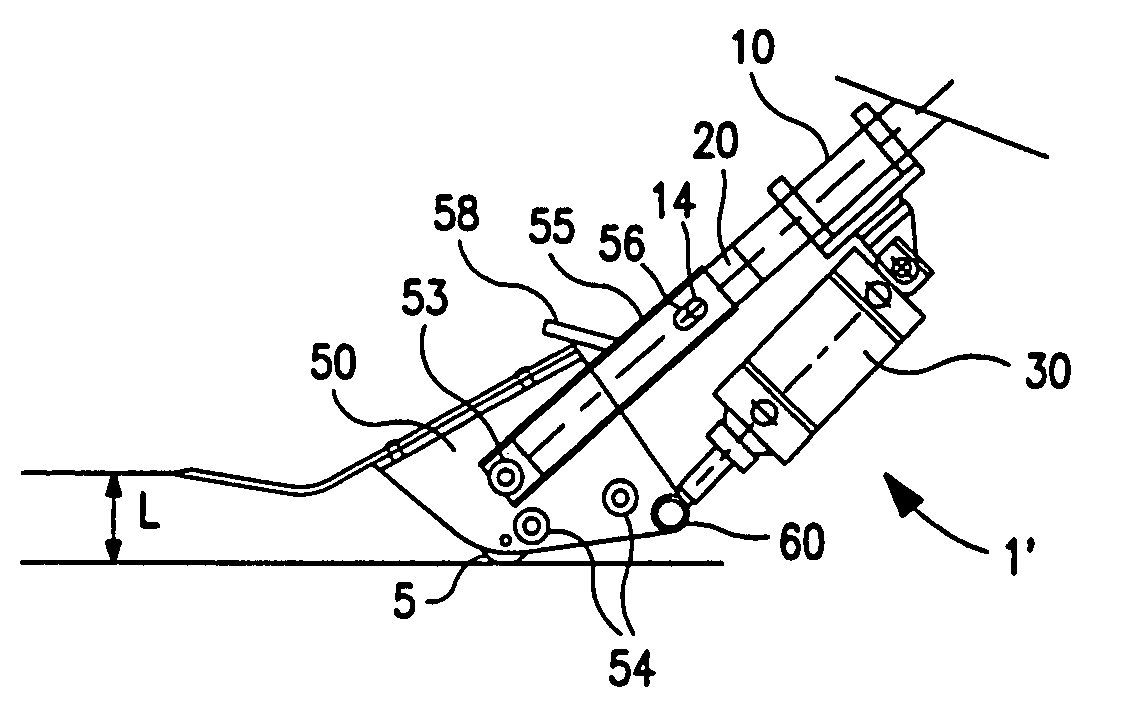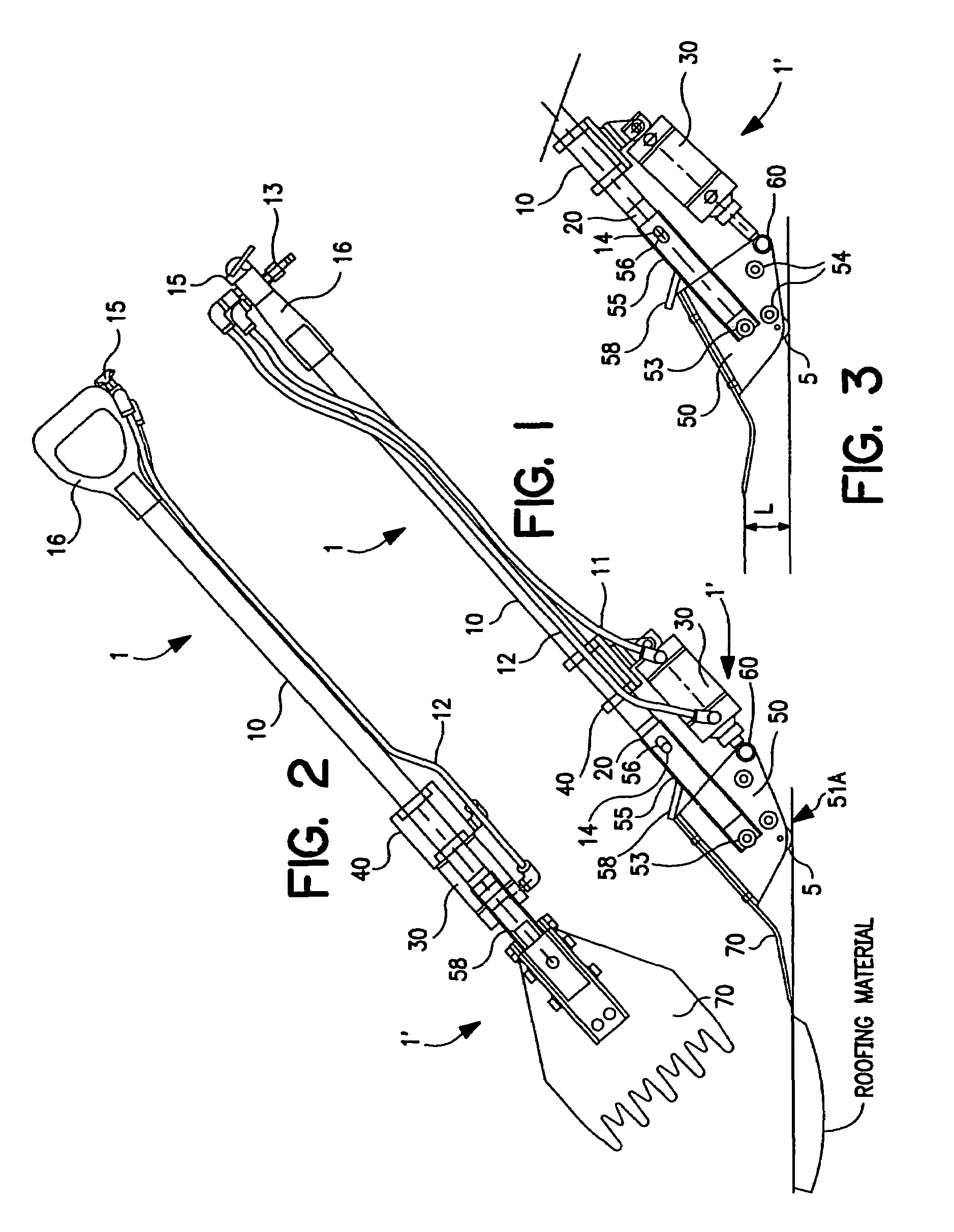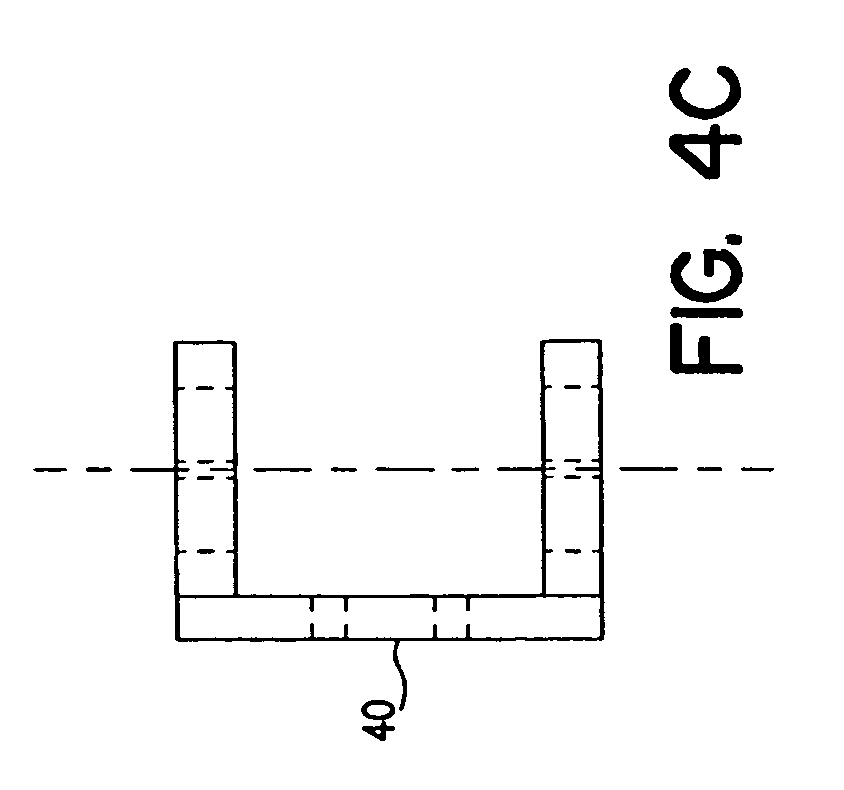Apparatus for removing surface coverings and methods for using such apparatus
a technology for removing surfaces and apparatuses, applied in the direction of oven incrustation prevention/removal, hollow article cleaning, manufacturing tools, etc., can solve the problems of not being able to raise any one flap of a shingle in order to gain access to fasteners, and affecting the use of the roof. , to achieve the effect of increasing the size of the roof, and reducing or minimizing fatigu
- Summary
- Abstract
- Description
- Claims
- Application Information
AI Technical Summary
Benefits of technology
Problems solved by technology
Method used
Image
Examples
Embodiment Construction
[0038]FIGS. 1-10 depict embodiments of the invention. Like numerals are used to identify the same or similar elements in each embodiment.
[0039]FIG. 1 is a side view of an apparatus 1 for removing surface coverings, according to an embodiment of the present invention. This figure depicts a view of apparatus 1 as a roofer would position it to remove roofing materials, comprising a blade 70, which pivots on a fulcrum 51A, at which a blade clevis 50 contacts the building surface. In addition, clevis 50 may comprise means for traversing the building surface with reduced friction or frictionlessly, such as a roller 5, disposed at or proximate to fulcrum 51A. A switch 15, such as a finger operated, directional control valve, is mounted to a handle 16 and connected to a second end of shaft 10 and via shaft 10 to a working head 1′ of apparatus 1. In FIG. 9, another embodiment of a handle 916 and a lever switch 915, such as a dead man's switch, is depicted.
[0040]Referring to FIG. 3, working h...
PUM
| Property | Measurement | Unit |
|---|---|---|
| diameter | aaaaa | aaaaa |
| distance | aaaaa | aaaaa |
| length | aaaaa | aaaaa |
Abstract
Description
Claims
Application Information
 Login to View More
Login to View More - R&D
- Intellectual Property
- Life Sciences
- Materials
- Tech Scout
- Unparalleled Data Quality
- Higher Quality Content
- 60% Fewer Hallucinations
Browse by: Latest US Patents, China's latest patents, Technical Efficacy Thesaurus, Application Domain, Technology Topic, Popular Technical Reports.
© 2025 PatSnap. All rights reserved.Legal|Privacy policy|Modern Slavery Act Transparency Statement|Sitemap|About US| Contact US: help@patsnap.com



